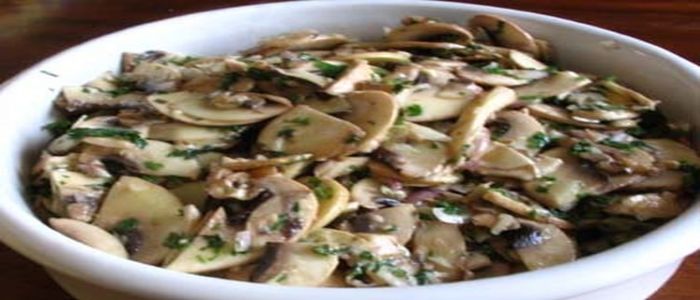
The substitute for beef and fish is increasingly on demand across the national territory.
Plant scientists are generally of the view that there are many edible wild plants but due to their non-domestication, the society is inhibited from consuming those edible plants and fails to get the nutritive content therein. Cultural values and individual perceptions have also taken people away from food sources which can cause the very persons to salivate. Amongst such food plants which Cameroonians were not hot about but have developed a new love for it, is mushroom; which was often considered as poisonous and deadly.
Despite its seasonal nature, many people want to have the ‘beef’ on their table all round the year, pushing a few passionate farmers to venture into mushroom farming. Yet, demand keeps soaring in major markets while the gradual steady increase in supply can’t satisfy the mushroom-happy mouths. Since mushroom production requires damn conditions, its production is usually retarded in between the months of November and March, but when the rains return fully as is the case now, the demand for mushroom even grows bigger.
Jomo Marie, a housewife in Yaounde has been scouting for fresh or even dry mushroom at the Mvogt-Betsi food market for the past 45 minutes to no avail. She was told by a petit trader that all the consignment which arrived in the market that day had been scrambled for before 8:30 am. Jomo left the market disappointed, hoping to return the following day very early in the morning in order to have a grasp of the delicacy. Before coming to the Mvogt-Betsi market, Jomo had been to the Acacia market but could not find the umbrella-shaped plant.
A similar deficit in the supply of mushroom can also be observed in other parts of the country as demand remains high. Though a kilogram of fresh mushroom costs FCFA 2,500 while the same quantity of dried mushroom costs as much as FCFA 12,500, the cost isn’t deterring consumers from the product. A passionate mushroom farmer in Bamenda, Kari Jackson Bongda says for 10 households, eight demand mushrooms mostly for medical reasons. Notwithstanding, he notes, many others consume mushroom for nutritional reasons and generally as a substitute for beef. Kari indicated that about 80% of households in the North West Region consume mushroom.
Going by officials of the Ministry of Agriculture and Rural Development, some 50 tonnes of mushroom are produced annually in the country, but shortage still persists. They indicate that even if the country produces some 100 tonnes per year, it will be readily consumed. The domestication of mushroom was introduced in the country in 1996 by a team of Chinese, and as at 2010, government had pumped in FCFA 40 million to boost the sector. Obala in the Centre Region remains a major production basin.
Le champignon en trois questions
Comment cultiver
Le champignon est cultivé à l'aide de matériaux comme les épis de maïs, la sciure, les cônes de palmier, etc. Et même avec des produits supplémentaires comme la farine de maïs, la coquille de riz, le son de soja, etc. Ces matériaux secs sont mélangés en quantités proportionnelles et plus tard amortis jusqu'à 67% d'eau. Les champignons s’arrosent légèrement et régulièrement. Ici, tout excès ou tout manque serait nuisible à une bonne production.
Où cultiver
Les champignons se cultivent essentiellement dans des endroits fermés, aérés et humides. Afin d’améliorer leur croissance. La culture des champignons est donc très respectueuse de l'environnement. Des matériaux comme les épis de maïs, la sciure de poussière, les cônes de palme qui sont des déchets utilisés et réutilisés ou recyclés pour la culture des champignons. Les restes sont utilisés comme fumier ou compost.
Comment conserver
Le champignon est principalement stocké sous forme sèche. L'énergie solaire est utilisée en séchage. Cela prend moins de six heures. On peut également préserver le champignon dans sa forme gel&...
Cet article complet est réservé aux abonnés
Déjà abonné ? Identifiez-vous >
Accédez en illimité à Cameroon Tribune Digital à partir de 26250 FCFA
Je M'abonne1 minute suffit pour vous abonner à Cameroon Tribune Digital !
- Votre numéro spécial cameroon-tribune en version numérique
- Des encarts
- Des appels d'offres exclusives
- D'avant-première (accès 24h avant la publication)
- Des éditions consultables sur tous supports (smartphone, tablettes, PC)














Commentaires